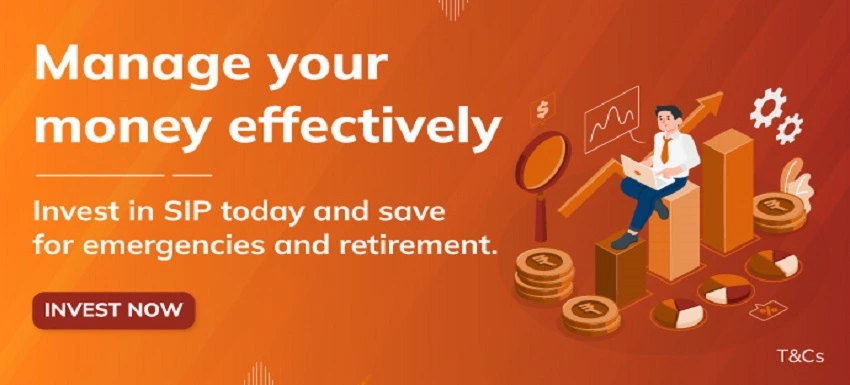THE
ORANGE
HUB
Best Investment Options in India to Get High Returns

Investing is important for achieving financial stability and growth. In India, there are plenty of investment options that offer varied returns and cater to different risk appetites. Understanding these options and choosing the right one is essential for maximising your returns. This blog will guide you about the best investment options in India.
What is an investment plan?
An investment plan helps you to understand where and how much to invest to achieve your financial goals, like buying a house, funding your education or planning your retirement. It's important to analyse each investment's pros and cons and modify your investment as per your objectives and risk tolerance. Investment planning is an ongoing process requiring regular review and adjustment.
Types of investment options in India
These are categorised based on risk levels:
Low-risk investments: Ideal for conservative investors, these offer stable and guaranteed returns. Examples include Fixed Deposits (FDs), Public Provident Funds (PPFs) and Sukanya Samriddhi Yojana (SSY).
Medium-risk investments: These offer decent returns with moderate risk. Medium-risk investments include debt funds, corporate bonds and government bonds.
High-risk investments: Suitable for risk-takers, these investments are linked to market performance. High-risk investments include stocks, Mutual Funds and Unit Linked Insurance Plans (ULIPs).
Best investment options for long term goals
Long term goals (7-10 years) require investments that offer high returns over time but with higher risks. Key options include:
Direct Equity
Investing in stocks like these requires you to have a Demat Account.
Equity Mutual Funds
Managed by professionals, Equity Mutual Funds offer market-linked returns with varying risk levels.
National Pension System (NPS)
Suitable for retirement planning, NPS mostly invests in equities and bonds. It provides tax benefits and market-linked returns.
ULIPs
A mix of insurance and investments, ULIPs offer life coverage and market-linked returns.
Real estate
This type of investment provides potential profits through property appreciation and rental income. The risk may range from medium to high.
Public Provident Fund (PPF)
This is a government-backed scheme offering a guaranteed interest rate and it is ideal for long term savings.
Senior Citizen Savings Scheme (SCSS) and Sukanya Samriddhi Yojana (SSY)
These offer guaranteed returns with specific eligibility criteria.
National Savings Certificate (NSC)
A post office savings product offering guaranteed interest.
Post Office Time Deposit
Similar to FDs, this investment option provides better returns.
Debt funds
These offer higher returns as compared to FDs with risk ranging from low to high.
Hybrid funds
These are a combination of equity and debt funds offering growth potential and stability.
Best investment options for short-term goals (1-3 years)
- Fixed Deposits (FDs): FDs offer guaranteed returns with low risk.
- Short-term debt funds: These include liquid funds, ultra-short duration funds and money market funds.
How to choose the best investment plan?
Choosing the best investment plan is a process that requires careful consideration of several key factors tailored to individual financial needs and circumstances. Here's a detailed overview:
Identifying financial goals and timelines
Start by defining what you're investing for - whether it's retirement, buying a house or funding education. Each goal will have a different timeline, which is important in deciding the type of investment. Short-term goals (1-3 years) may require more liquid and lower-risk investments, whereas for long-term goals (over 7 years) you may opt for higher-risk investments like stocks or equity funds, offering higher returns over time.
Assessing risk tolerance
This is about understanding how much risk you're ready to take. High-risk investments such as stocks can offer higher returns but they are affected by market volatilities. On the other hand, low-risk investments like Fixed Deposits provide stability but yield lower returns. Your risk tolerance may change with age, financial responsibilities and market conditions, so it's important to reassess regularly.
Evaluating different options
Research various investment options, considering their advantages and disadvantages. This includes understanding the potential returns, the risks involved and any tax implications. Comparing different options helps in making an informed decision that aligns with your goals and risk appetite.
Diversifying investments
Diversifying your portfolio across different asset classes (equities, bonds, real estate, etc.) can reduce risks and improve returns. It helps in balancing the portfolio during market fluctuations.
Regular monitoring and reviewing
Investment markets are dynamic. Regularly reviewing and adjusting your investments as per your personal circumstances, financial market changes and economic shifts is vital.
Factors to consider while choosing an investment option:
Financial goals: Modify your investments as per your specific financial objectives.
Risk tolerance: Choose investments that align with the level of risk you can take.
Performance history: Look at the past performance as a guide, but this may not guarantee future results.
Lock-in period: Some investments have a lock-in period; ensure this aligns with your liquidity needs.
Investment expenses: Consider all costs involved such as management fees to understand the return on your investments.
Required documents:
KYC documents
PAN card
Proof of income (if applicable)
Bank account details
Which investment option is best for you?
Your choice depends on:
Risk appetite: Low-risk options for conservative investors; high-risk options for risk-takers
Desired returns: Market-linked returns vs. regular income
Tax benefits: Consider investment options offering tax deductions
Financial goals: Align investments with your objectives
Investment frequency: Regular investments like SIPs in Mutual Funds
When it comes to choosing an investment option, understand your needs, assess your risk tolerance and select wisely to secure your financial future. Investing is a journey - start early, be disciplined and stay informed for the best outcomes.
Scroll to top











